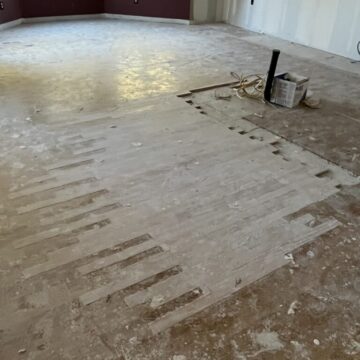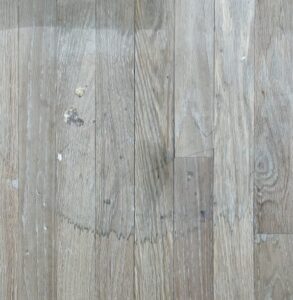
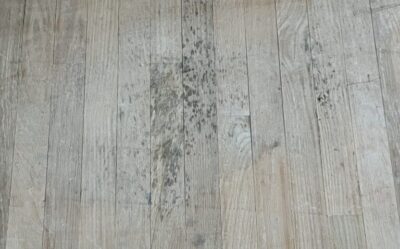
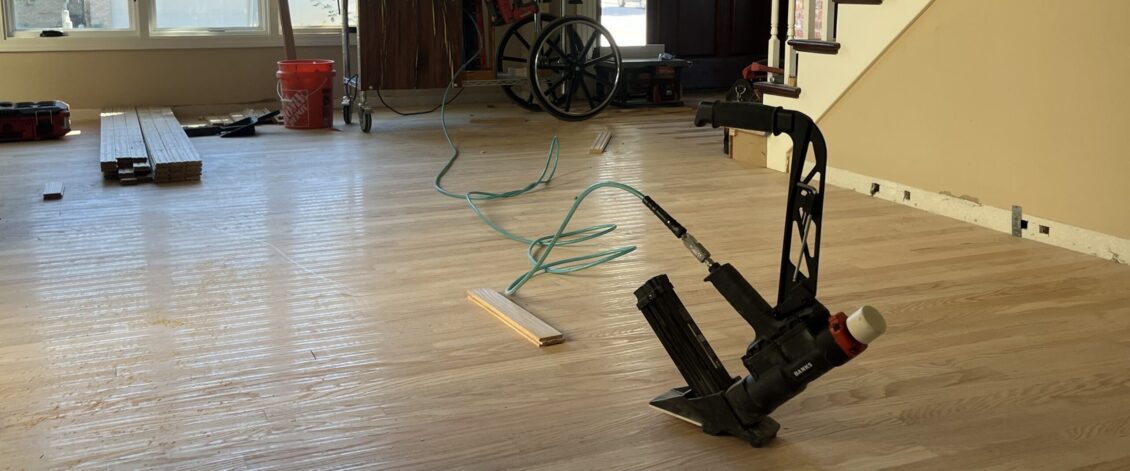

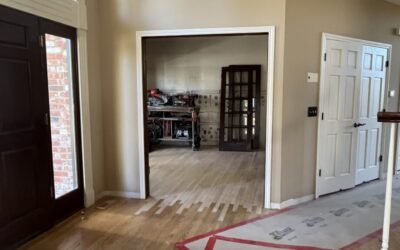

Wood floor remodeling tips
When installing new wood flooring, the interior environment of the home should be part of the plan. Typical home remodels involve altering walls and updating bathrooms and kitchens.
Drywall work in the home is a wet trade. Moisture is introduced into the home during the process. Protecting your wood floors during a drywall process is key. We will illustrate the potential issues that can occur during a remodel to an unprotected floor.
Acclimation is the process of storing wood flooring to equilibrate the moisture content (MC) to that of a home. Drywall and painting procedures can increase the moisture content in flooring.
Repeated exposure of wood surfaces to moisture can result in mold growth or dimensional changes in the flooring such as cupping. Sanding of wood floors with elevated moisture content is likely to result in a crowned surface afterwards.
Problems afoot
The pictures on the right illustrate some of what can happen to a wood floor when drywall contractors fail to protect a project.
The first pic illustrates where drywall mud fell on the floor. Drywall mud can possibly embed within the soft grain of a floor or between boards. Sanding the floor generally removes the issue, but in some circumstances it may not.
The second picture simply represents a dirty job site. There was a tremendous amount of drywall dust across the floor that required cleaning prior to floor sanding.
In the final picture, it is apparent a spill happened. The amount of water was significant enough to swell the floor and create slight cupping. We monitored and moisture checked this area prior to sanding to prevent latent crowning of the floor.
Spills
Protect all wood floors prior to drywall or painting. This is especially true for wood flooring that yet to be finished with a protective urethane.
Dust Doesn’t Help
Whether you’re doing other trades or having the floors sanded, keeping the overall working area clean helps. Clean project = clean finishes.
Watch Out
An ounce of prevention will go a long way in wood floor projects. Protecting the floor from dropped tools using Ram-board helps a lot.

Adding to an existing wood floor in your home is a great value add. A number of floor covering stores will often convince homeowners that it is better to start fresh and tear out a perfectly good floor. In the scheme of budget and environmental impacts, this plan is nothing short of a train wreck.
Having one contiguous surface throughout your home can make the home have better flow and feel more open. The flooring in this picture is a fairly common type on the front range of Colorado ( 2 1/4″ wide select red oak). Red oak can vary in color and grade depending on region of harvest and willingness of a manufacturer to participate in industry established grading standards.
Crowning
As the pic illustrates, sanding a wood floor with elevated moisture content can create crowning as a latent defect.
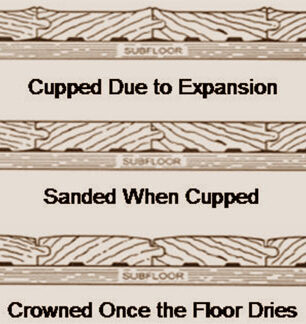
Dents
Tools falling on a floor can result in the need for aggressive sanding or board replacements.
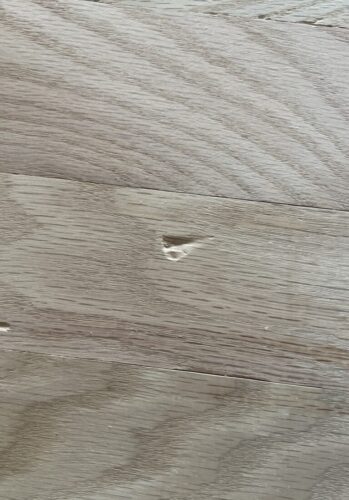
Mold
Repeated moisture exposure can create mold. This occurred underneath the painters tarp where the drywallers stored tools during the project.
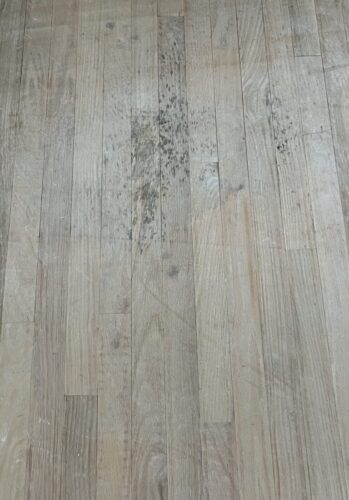
Grade Matched
Critical to integrating a new wood floor with an existing floor is the match in grade for the material. The milling of the two materials must also be compatible.
Bold Solutions
A new wood floor is essentially a blank slate for your ideas. You can alter the color of your floor and make a dramatic change to the look of your home. Check out our Pinterest page for ideas.
Milling matters
The precision of how boards in a floor fit together can impact long term performance of a floor. Flooring with milling defects and dimensional inconsistencies is not worth the risk simply to save a few dollars.

